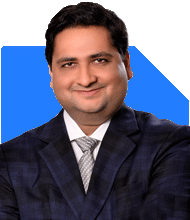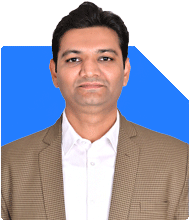hi me ek gov. servant hu meri monthly salary 80000/- hai maine sbi home loan 2500000/- liya (Des-2022 / 18 years) hai monthly emi 230000/-hai wo maine ghar pune mai liya hai usko rent par diya hai 15000/- meri 20 years se job kar raha hu maine gpf mai 40,00,000/- saveing kar li hai jo latest rate of intreast 7.1 % hai jo comunding milta hai mai gpf har saal 300000/- saveing karta hu 6000/- mutual fund main sip hai bachhonki (11Years girls & 5 years Boy ) school fees har saal 100000 hai aur sukanya samrudhi main bhi minimum savng hai muje next ek ghar banawana hai jo maine ek plot liya tha uspar abhi mere pas 1400000 hai jo baki paiso ke liya kya gpf mese paise nkale ya lone lake aur meri saveing sahi hai
Ans: Your planning is disciplined. You are managing loans, savings, and family needs with balance. Let’s go point-by-point and assess your situation professionally from all angles. This will help you take the best decision for building your second house and securing your future.
Current Financial Snapshot
Your monthly salary is Rs. 80,000.
Your EMI is Rs. 23,000 for the home loan taken in Dec 2022.
You earn Rs. 15,000 monthly from renting this house.
You have completed 20 years in government service.
You have saved Rs. 40 lakh in GPF earning 7.1% interest compounded.
You are contributing Rs. 3 lakh every year to GPF.
You have SIP of Rs. 6,000 in mutual funds.
You have two children – one is 11 years and the other is 5 years.
You pay Rs. 1 lakh yearly as school fees.
You contribute to Sukanya Samriddhi at minimum level.
You have Rs. 14 lakh saved to build a house on your plot.
Now the key question is: Should you use GPF for building your house or take a loan?
Let’s assess this from multiple angles.
Home Construction: Options Available
You have 2 choices to complete the home construction:
Withdraw money from GPF
Take a new home construction loan
Each option has benefits and limitations. Let’s compare clearly.
Using GPF for House Construction
Advantages
It is your money, so no interest to pay.
No EMI burden or repayment pressure.
Withdrawal from GPF for house is allowed as per rules.
Emotionally peaceful – you are not increasing debt.
Disadvantages
GPF gives 7.1% compound interest.
Once withdrawn, that compounding stops on that amount.
GPF is your retirement backup.
Reducing it will affect your old age financial safety.
Building a house is one-time, but retirement is a long journey.
Professional Insight
GPF should be your last option, not the first.
Withdraw only if no other option is available.
Taking Home Construction Loan
Advantages
You keep your GPF intact.
You continue to earn 7.1% interest compounded.
You get home loan tax benefits under 80C and Section 24.
Repayment can be structured as per your budget.
Disadvantages
You have to pay EMI regularly.
Loan rate may be 8-9% range, higher than GPF interest.
It adds more debt pressure on you.
Professional Insight
EMI is manageable if you plan carefully.
GPF balance of Rs. 40 lakh gives safety cushion.
So taking loan makes more sense, if EMI is affordable.
Monthly Budget Assessment
Salary: Rs. 80,000
Existing EMI: Rs. 23,000
Rent income: Rs. 15,000
School fee yearly: Rs. 1 lakh
SIP: Rs. 6,000
You are already managing EMI, fees, and SIP with discipline.
If you take another loan of Rs. 10-12 lakh, EMI will be Rs. 8,000 to Rs. 10,000 approx.
This is possible, if rent is used wisely and you avoid big expenses.
Child Education and Future Planning
Your daughter is 11 years. In 7 years, college will start.
Son is 5 years. So you have 13 years before his higher education.
You should increase SIP gradually every year.
Sukanya Samriddhi is good, but minimum saving is not enough.
Start SIPs for both kids’ future goals separately.
Target long term goals like higher education and marriage.
Continue SIP even during home construction.
Retirement Safety Evaluation
GPF is your retirement backbone.
Rs. 40 lakh at 7.1% compounded will double in around 10-11 years.
If you withdraw now, final corpus will reduce sharply.
Avoid disturbing it unless absolutely needed.
Continue Rs. 3 lakh yearly contribution without fail.
Strategy for New House Construction
You already have Rs. 14 lakh saved.
Let’s say construction needs Rs. 25 lakh.
Gap is Rs. 11 lakh approx.
Best strategy:
Use Rs. 14 lakh saved by you.
Take home construction loan of Rs. 10-12 lakh.
Keep GPF untouched.
Keep GPF for future security.
How to Manage Construction Loan EMI
Use rent income to cover part of EMI.
Avoid unnecessary luxury spending.
Cut gold and festival expenses if needed.
Take loan with flexible prepayment option.
When bonus or arrears come, use for loan part-payment.
Investment Rebalancing Tips
Increase SIP from Rs. 6,000 to Rs. 10,000 next year.
Keep mutual fund SIP for both child and your retirement.
Start one new SIP for daughter’s higher education.
Use mutual fund only for long-term goals.
Avoid index funds. They don’t beat inflation after tax.
Active funds adjust to Indian market better.
Emergency Fund Reminder
Keep at least Rs. 1.5 to 2 lakh as emergency fund.
Don’t use this money for house or loan.
Keep it in savings account or short-term liquid fund.
Insurance Planning
Check if you have term life insurance.
Minimum Rs. 50 lakh coverage is needed.
Premium is low for government servants.
Also take health insurance for full family.
School Fee and Lifestyle Cost
Your school fee is Rs. 1 lakh yearly.
It will grow as kids grow.
Plan SIP in liquid funds to prepare yearly school fee.
Final Construction Strategy
Estimate house construction cost with contractor clearly.
Plan in 2-3 stages. Use cash first, then loan.
Keep Rs. 1 lakh buffer for emergency during construction.
Finally
Your savings habits are very good.
GPF is strong pillar. Keep it growing.
Don’t touch GPF now.
Take small loan for second house.
Manage EMI smartly with rent and budget.
Increase SIP yearly for kids and retirement.
Avoid index funds.
Stay consistent.
Review yearly with proper planning.
Best Regards,
K. Ramalingam, MBA, CFP,
Chief Financial Planner,
www.holisticinvestment.in
https://www.youtube.com/@HolisticInvestment

























